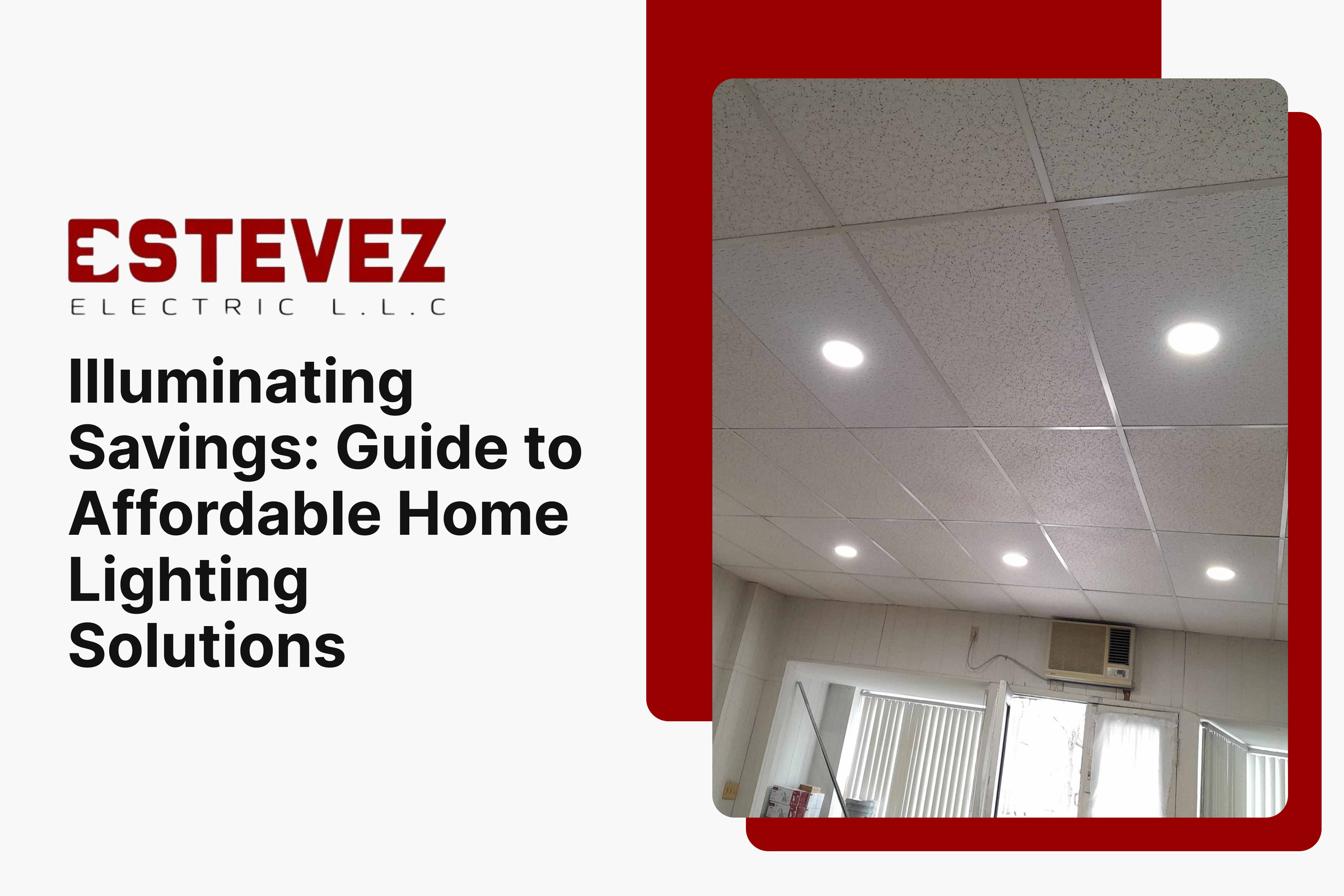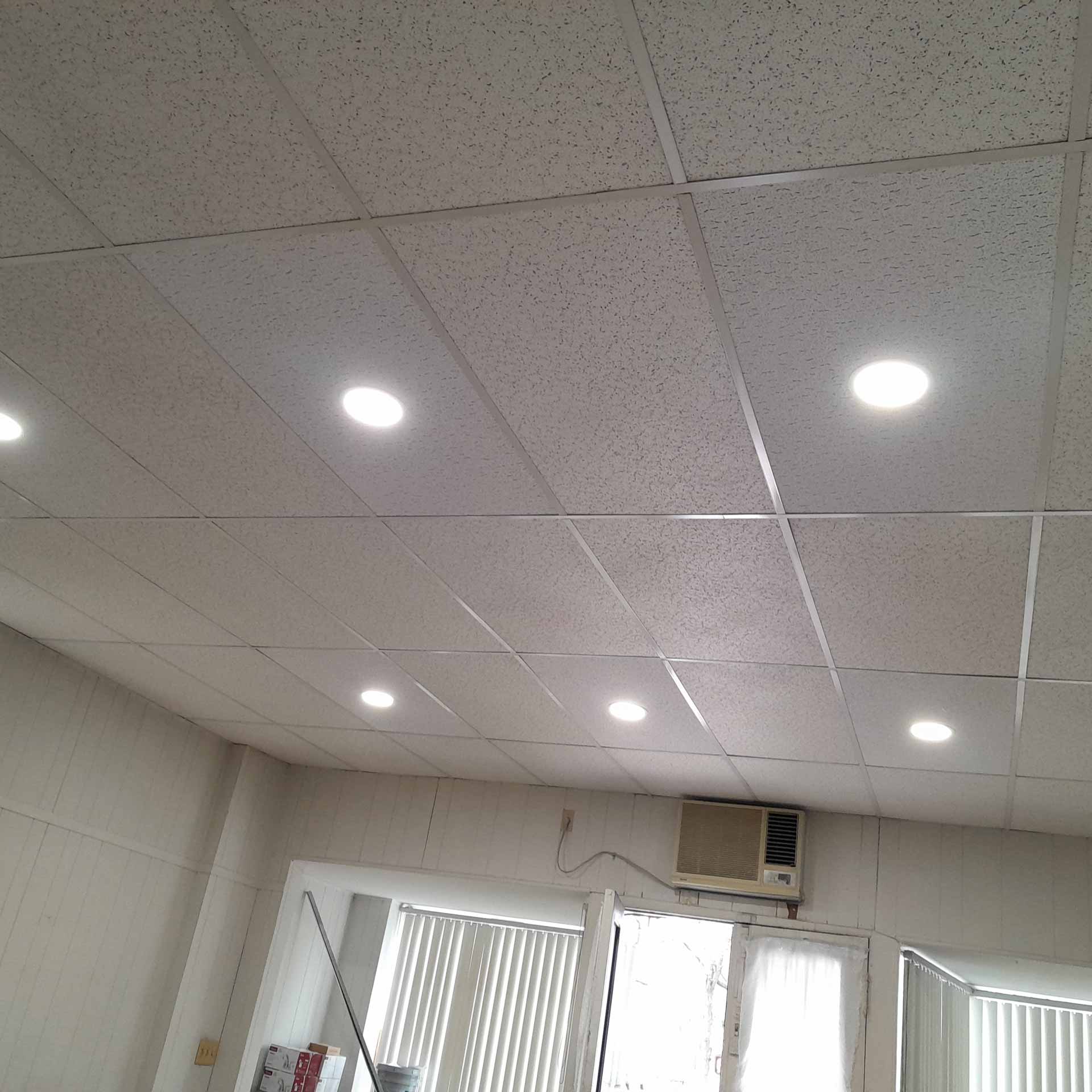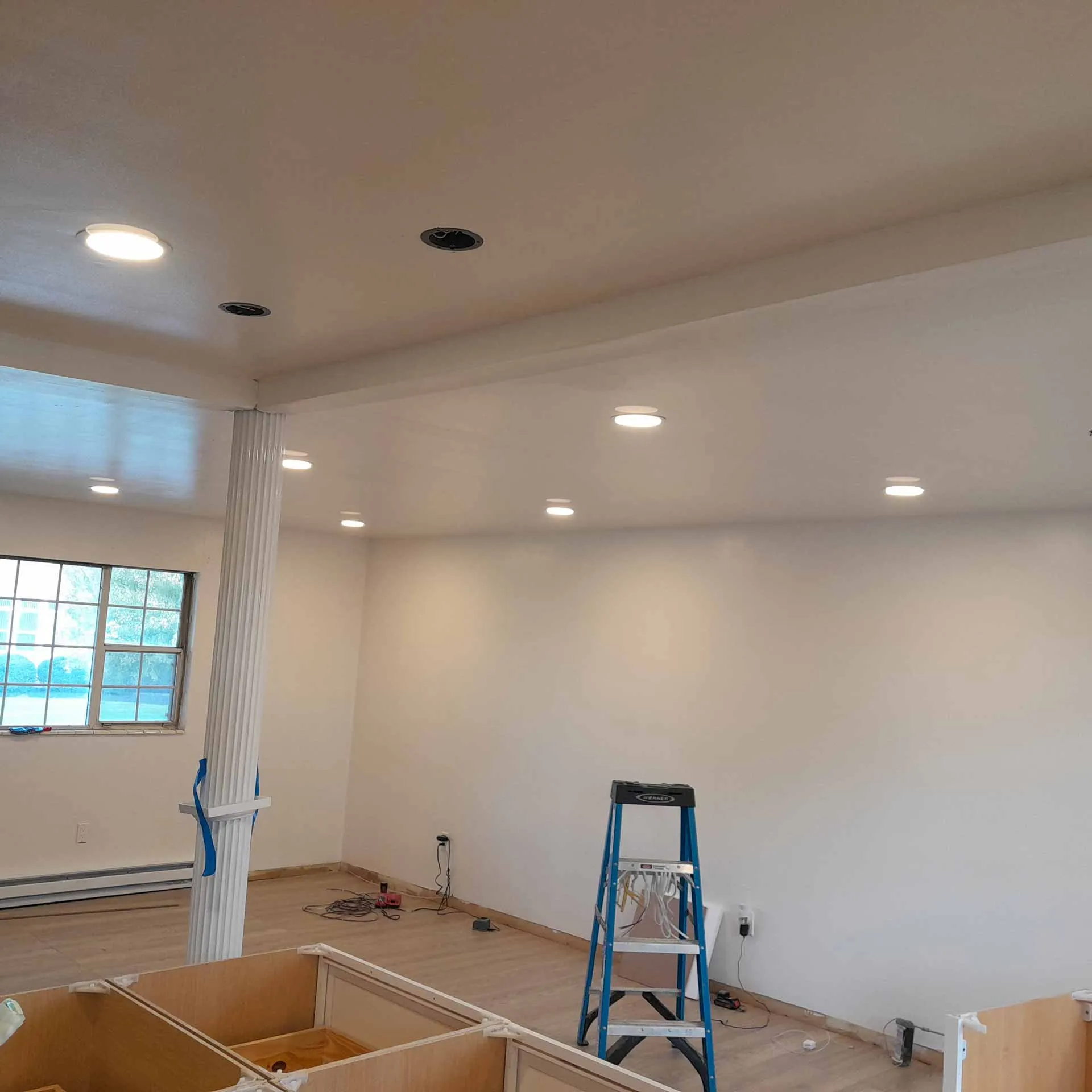Lighting is important in our homes. It affects how things look and how much we pay for electricity. With some smart choices, you can have a bright home without spending too much money. Let’s look at some cheap ways to light up your home that will make your rooms brighter and save you money. We’ll also think about how energy-saving lights can make your home more comfortable and valuable in the long run.
| Key Takeaways |
|---|
|
– LED lighting saves up to 90% energy compared to old bulbs – Smart lighting systems are handy and save more energy – Using sunlight is a free way to brighten your home – Choosing the right lights can look good and be affordable – Taking care of your lights keeps them working well for longer |
1. The Bright Side of LED Lighting: Energy-Efficient and Cost-Effective
LED lighting has changed how we light our homes. It saves a lot of energy and money over time. LED bulbs use at least 75% less energy than old-style bulbs. This means you can save a lot on your electricity bills. It’s also better for the environment because it uses less power.
Good things about LED lighting:
- Saves Energy: LED bulbs use 75-90% less energy than old bulbs, which means lower electricity bills
- Lasts Longer: LEDs can work up to 25 times longer than old bulbs, so you don’t need to change them as often
- Many Choices: You can get LEDs in different colors and styles to fit any room
- Lights Up Fast: LEDs turn on right away at full brightness
- Tough: LEDs don’t break easily and work well in hot or cold places
By using LED lights, families can save about $225 each year on electricity. This makes LED bulbs a smart choice if you want to save money over time. LEDs also help the environment by using less energy. As technology gets better, LEDs are becoming cheaper and easier for more people to buy.
2. Smart Home Lighting: Convenience Meets Energy Savings
Using smart lighting in your home can help you save energy and make things easier. Smart lights let you control them with your phone, set schedules, and change how bright they are. These smart systems can learn what you like and adjust the lights to save even more energy.
Good things about smart lighting:
- Set Schedules: You can make lights turn on and off by themselves, so they’re only on when you need them
- Control from Anywhere: Use your phone to turn lights off even when you’re not home
- Change Brightness: Make lights brighter or dimmer to save energy and set the right mood
- Works with Other Smart Stuff: Can team up with thermostats and security systems to save more energy
- Voice Control: Many smart lights work with voice assistants, making them easy to use
- See How Much Energy You Use: Some smart systems show you how much energy you’re using, helping you save more
Smart lighting might cost more at first, but it can save you a lot of money over time. It’s good for people who want a modern home and want to save on energy bills. As more people start using smart lights, they might get cheaper in the future.
3. Maximizing Natural Light: Cost-Free Illumination
One of the cheapest ways to light your home is using sunlight. Using more natural light means you don’t need to turn on as many lights during the day. This saves electricity and makes your home feel nicer. Sunlight is also good for your health – it can make you feel happier, help you sleep better, and give you vitamin D.
Here are some ways to use more natural light:
- Use Mirrors: Put mirrors where they can bounce light into dark corners and make rooms look bigger
- Light-Colored Paint: Paint walls and ceilings light colors to make rooms brighter without more lights
- Window Covers: Use thin curtains to let light in but keep privacy, or get blinds you can open easily
- Skylights and Sun Tubes: These can bring light into rooms that don’t have windows
- Trim Trees: Cut back trees and bushes near windows so more light can come in
- Glass Doors: Replace solid doors with glass ones to let light move between rooms
Using more natural light can make your home brighter without costing any money. It makes your home feel nicer and healthier too. Plus, it means you don’t need to use as many lights when electricity is most expensive, saving you even more money.
4. Budget-Friendly Fixture Selection
Picking the right lights can make your home look good and save you money. Here are some tips for choosing affordable lights that still look nice:
- Multi-Use Lights: Choose lights that do more than one job, like floor lamps with reading lights or ceiling fans with lights
- Second-Hand or Upcycled: Look for unique lights at thrift stores or online marketplaces, or try making your own from old things
- Affordable Modern Designs: Many stores sell stylish lights that look expensive but don’t cost much
- Make Your Own: Create your own lights to match exactly what you want and save money
- Modular Lighting: Buy lights you can add to or change over time, so you don’t have to spend all at once
- Energy Star Certified: Look for lights with this label to make sure they save energy and money
Remember, expensive doesn’t always mean better. With some searching and creativity, you can find or make beautiful lights that don’t cost too much. Think about how much energy the lights use, not just how much they cost to buy. This can save you more money over time. By balancing how lights look, how they work, and how much energy they use, you can have a well-lit home that fits your style and budget.
5. The Role of Electrical Panel Upgrades in Lighting Efficiency
Sometimes, to improve your home’s lighting, you need to start with the electrical basics. Upgrading your electrical panel can make sure your home can handle new, energy-saving lights. An old electrical panel might not work well with modern lights, which could stop you from using the best energy-saving options.
Upgrading your electrical panel might seem expensive, but it can save you money and make your home more energy-efficient in the long run. Here are some things to think about:
- Check Your Current Panel: See if you need an upgrade by looking at how much power your current panel can handle
- Cost: Upgrades usually cost between $850 and $3,000, depending on how complicated the job is
- Long-Term Benefits: Better energy efficiency can lead to lower electricity bills over time
- Safety: Make sure your electrical system can handle your lighting needs safely
- Future-Ready: An upgraded panel can support future home improvements, which might make your home worth more
- Rebates: Check if your local power company or government offers money back for electrical upgrades that save energy
An upgraded electrical panel can support more energy-efficient lights, which could lower your electricity bills over time. It also lets you use smart home technologies and other energy-saving devices throughout your home. While it costs money at first, the long-term benefits in safety, efficiency, and home value make it worth thinking about for homeowners who want to improve their lighting and overall energy use.
6. Energy-Efficient Lighting for Different Room Types
Choosing the right lights for each room can help you save energy and make your home work better. Here’s a quick guide:
- Kitchen: Use task lights under cabinets, main lights that can be dimmed, and hanging lights over islands or dining areas
- Living Room: Use different types of lights like floor lamps, table lamps, and ceiling lights. Smart bulbs can help you change the lighting easily
- Bedroom: Use soft lights that can be dimmed, like bedside lamps with warm LED bulbs and subtle accent lights
- Bathroom: Use bright, even lighting for getting ready, with LED lights around mirrors and overhead lights that show colors accurately
- Home Office: Use adjustable lighting to reduce eye strain, with task lighting for your desk and other lights to reduce glare on computer screens
- Dining Room: Use a hanging light or chandelier over the dining table that can be dimmed, with wall lights for extra atmosphere
- Hallways and Stairs: Use LED lights with motion sensors for safety and to save energy in these areas
By choosing the right lights for each space, you can make your home comfortable while using less energy. Think about the color of the light too – use cooler lights in work areas to help you stay alert, and warmer lights in relaxing areas. Using a mix of main lights, task lights, and accent lights in each room gives you more options and can help save energy by letting you use only the lights you need for what you’re doing.
7. Timing and Motion Sensors: Automate Your Savings
Using automatic controls can stop energy waste and save you more money on lighting. These smart solutions make sure lights are only on when needed, taking away the chance of forgetting to turn lights off. Here are some options:
- Motion Sensors: Good for garages, basements, outdoor areas, and storage spaces where lights might be left on by mistake
- Timers for Outside Lights: Make sure outside lights are only on when needed, changing automatically with the seasons
- Daylight Sensors: Change indoor lighting based on how much natural light there is, dimming or turning off lights when there’s enough daylight
- Occupancy Sensors: Perfect for bathrooms, laundry rooms, and closets, these turn lights on when someone is there and off when they leave
- Smart Switches: Replace old switches with smart ones that you can program, control from your phone, or connect to your smart home system
- Adaptive Lighting: Advanced systems that learn when you use rooms and adjust lighting automatically over time
These automatic solutions can really cut down on wasted lighting, leading to noticeable savings on your energy bills. By not needing someone to turn lights on and off, they make sure energy is used best even when people forget. Many of these systems can work with smart home setups, letting you manage energy use across your whole home. When picking automatic lighting controls, think about how easy they are to install, if they work with your current lights, and if they can connect with other smart home devices to make things more convenient and save more energy.
8. Landscape Lighting: Affordable Curb Appeal and Security
Outdoor lighting doesn’t have to cost a lot. Here’s how to make your yard look nice and safe without spending too much:
- Solar Lights: Use lights powered by the sun to save on electricity and avoid needing to wire them
- Smart Placement: Light up important parts of your yard without making it too bright
- Low-Voltage Systems: Use less energy while still lighting up your outdoor areas well
- Do It Yourself: Save money by installing simple outdoor lights yourself, following the instructions carefully
- LED Outdoor Lights: Choose energy-saving LED lights made for outside use that last long and can handle weather
- Timers and Light Sensors: Make your outdoor lights turn on and off automatically to save more energy
- Reflective Materials: Use things that reflect light in your yard to make a few lights look brighter
Affordable outdoor lighting can make your home look better and safer without raising your energy bills much. By using energy-saving lights and putting them in smart places, you can make your yard look nice and feel safe. Remember to think about how much it will cost to keep the lights working and how much energy they use over time, because cheaper lights might end up costing more to run.
9. DIY Lighting Projects for the Budget-Conscious
If you like making things, DIY lighting can be a fun and cheap way to light up your home. These projects let you create lights that match your style perfectly while saving money. Here are some ideas:
- Mason Jar Pendant Lights: Turn simple jars into cool hanging lights for a rustic look
- Wine Bottle Lamps: Use empty bottles to make unique lamps, adding creativity to your lighting
- Paper Lantern Makeovers: Change cheap paper lanterns with paint or fabric to make them look special
- Rope Light Designs: Make custom shapes with flexible rope lights for accent lighting or cool displays
- Repurposed Vintage Items: Turn old things like cameras or musical instruments into one-of-a-kind lamps
- Concrete Pendant Lights: Make modern-looking hanging lights using concrete molds and simple electrical parts
- Branch Chandeliers: Combine natural branches with lights to create unique, nature-inspired fixtures
These DIY projects let you make your lighting special while keeping costs low. When doing DIY lighting projects, always be safe by following electrical rules or asking a professional for help with tricky parts. Also, try to use energy-saving LED bulbs in your DIY lights to make sure they don’t cost too much to use. By mixing creativity with energy-saving parts, you can make unique lights that show your style and help save energy in your home.
10. Maintenance Tips for Long-Lasting, Efficient Lighting
Taking good care of your lights helps them stay cheap to run over time. Regular maintenance makes your lights and bulbs last longer and keeps them working efficiently. Follow these tips:
- Clean Regularly: Dust-free lights give better light. Clean bulbs and fixtures at least twice a year
- Replace Quickly: Change bulbs that are starting to fail to keep efficiency up and prevent damage to fixtures. Look for flickering or dimming
- Check Connections: Stop energy waste and potential dangers by checking and tightening electrical connections sometimes
- Update Old Lights: Think about replacing old, inefficient lights with newer, energy-saving ones to improve overall lighting efficiency
- Check Voltage: Use a voltage tester to make sure your lighting circuits are getting the right voltage, as changes can affect efficiency and how long lights last
- Recycle Old Bulbs: Recycle CFL and LED bulbs properly to help the environment
- Take Care of Outdoor Lights: Regularly clean and check outdoor lighting to make sure it stays weatherproof and efficient
By maintaining your lights and bulbs, you can make sure they work their best, saving you money in the long run. Good maintenance also helps find problems before they get big, potentially saving on expensive repairs or replacements. Well-maintained lighting systems also make your home safer by reducing the risk of electrical problems. Think about making a schedule to keep up with your lighting systems, and don’t hesitate to ask a professional electrician for help with more complicated maintenance or if you notice any ongoing issues with your home’s lighting.
Conclusion: Illuminating Your Home Affordably
Using affordable home lighting solutions doesn’t mean you have to settle for poor quality or boring designs. By using energy-efficient technologies, smart home features, and thoughtful design choices, you can create a well-lit, welcoming home while keeping costs down. Remember, the key to affordable lighting is balancing initial costs with long-term energy savings and maintenance needs.
Whether you’re changing all the lights in your home or just improving one room, these tips will help you light up your space beautifully and cheaply. With some planning and creativity, you can enjoy a brighter home without spending too much money.






